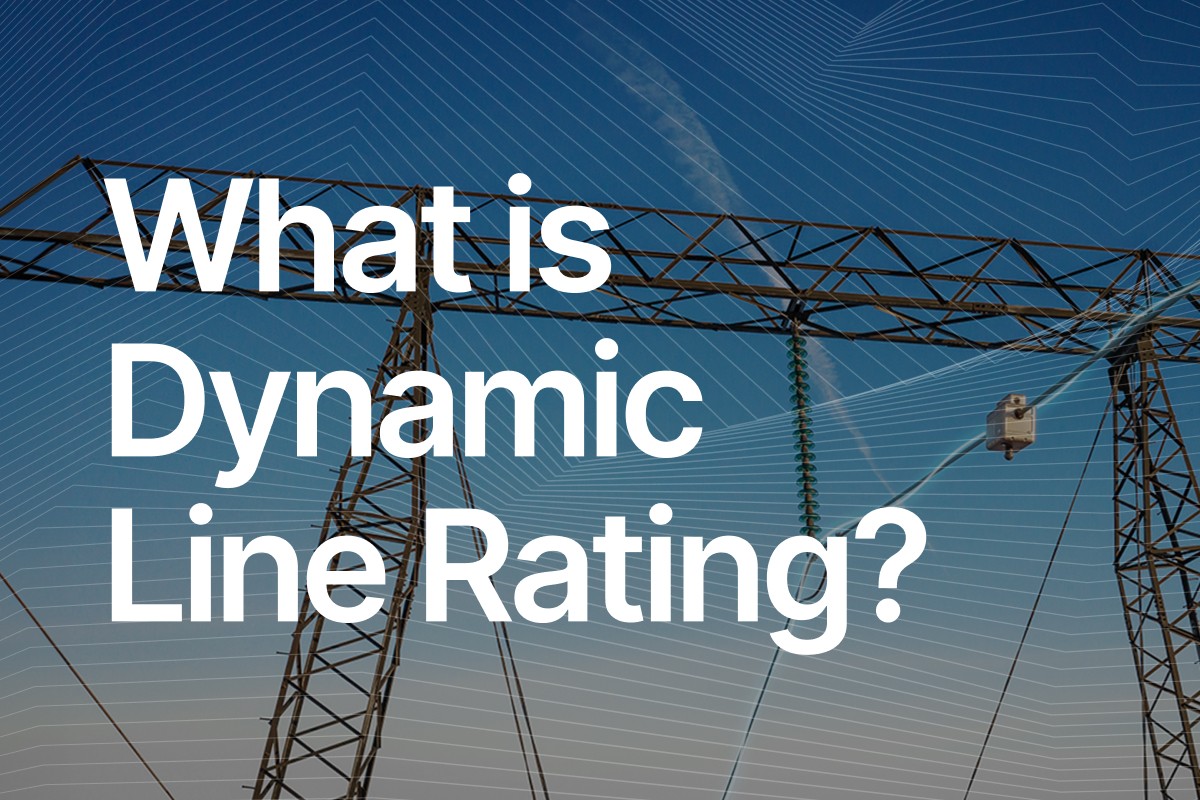
Laki Power
4 Min Read
·
Sep 16, 2024

Whether you are a utility, an energy industry professional, or simply interested in learning more about grid optimization, Dynamic Line Rating (DLR) is a key technology that could change the way we manage electricity transmission.
Dynamic Line Rating is a method used to determine the maximum capacity of a power line in real-time. It enables operators to safely increase the amount of power that can be transmitted based on current environmental conditions. As energy demand grows and the need to integrate renewable sources increases, DLR is becoming increasingly important for the modern power grid.
Why is DLR Important?
The more power you push through a transmission line, the hotter the line becomes. As the line heats up, it expands and begins to sag, which can pose serious risks such as contact with objects or the ground, potentially leading to outages or fires. This is why power lines are given ratings that limit how much electricity they can carry.
Traditionally, these ratings are static, meaning they are based on worst-case scenarios like high temperatures and low wind speeds. These conservative ratings protect the grid but often underestimate the actual capacity of the lines, especially during cooler or windier conditions when the lines could safely carry more electricity.
By utilizing real-time data, DLR provides a more accurate rating that adjusts to actual environmental factors. This allows operators to increase the line’s capacity when conditions are favorable, such as during windy or cool weather, and reduce the risk of overheating.
How Does DLR Work?
DLR relies on continuous monitoring of various environmental and operational factors that affect the capacity of power lines. These include:
Wind Speed and Direction: Wind plays a crucial role in cooling power lines and can account for up to 80% of the increase in line capacity in some cases. Strong winds help dissipate heat, allowing more electricity to flow through the line safely.
Ambient Temperature: Cooler temperatures help power lines stay within their thermal limits, increasing the amount of power that can be transmitted.
Solar Radiation: Direct sunlight can warm power lines, reducing their capacity. Monitoring solar exposure helps adjust the ratings accordingly.
Line Temperature and Sag: Real-time measurements of the line’s temperature and physical sag provide critical data for adjusting capacity in response to changing conditions.
By analyzing these variables, DLR systems dynamically adjust the line rating to match real-world conditions, optimizing the flow of electricity in real time.
Dynamic Line Rating Sensors
To implement DLR, real-time data collection is critical. Laki Power’s LKX-MULTI sensor is a line-powered solution that continuously monitors key factors affecting line capacity. In addition to directly measuring wind speed and direction, which play an important role in cooling the line, it also monitors parameters such as line temperature, ambient temperature, and load. By capturing this range of data, the system provides utilities with the detailed insights they need to make accurate, real-time adjustments to transmission capacity without requiring external power sources.
Benefits of Dynamic Line Rating
The implementation of Dynamic Line Rating offers several key benefits for the electricity transmission grid:
Increased Transmission Capacity: During favorable weather conditions, lines can carry more electricity than their static rating allows. DLR unlocks this hidden capacity.
Better Grid Reliability: By providing real-time information, DLR can help prevent line overloading and reduce the risk of outages.
Facilitating Renewable Energy Integration: Renewable energy sources like wind and solar can cause variable electricity generation. DLR helps to accommodate this variability by dynamically adjusting line capacity based on real-time conditions.
Delaying or Avoiding Infrastructure Upgrades: DLR allows operators to maximize the use of existing lines, reducing the need for expensive infrastructure upgrades.
Conclusion
Dynamic Line Rating offers a powerful tool for improving grid efficiency, enhancing safety, and integrating renewable energy into the power network. By dynamically adjusting the capacity of power lines based on real-time data, DLR helps utilities make better use of their existing infrastructure while maintaining reliability.
Interested in learning more about how Dynamic Line Rating can optimize your grid’s performance? At Laki Power, our team of experts is dedicated to helping utilities implement cutting-edge solutions tailored to their unique needs. We have extensive experience in real-time monitoring and grid optimization, and we’re here to guide you through every step, from understanding the technology to deploying it in the field. Whether you’re looking to improve transmission efficiency, enhance grid reliability, or integrate more renewable energy, Laki Power is ready to support your goals.